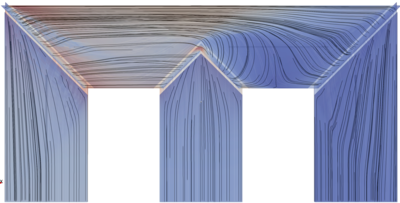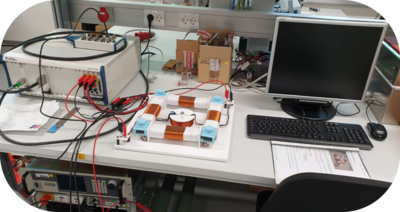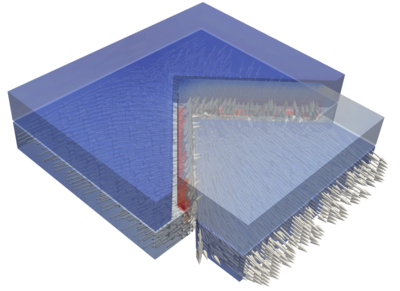Numerical simulation and modeling of three-phase transformers
This project is a cooperation with an Austrian industry partner, covering a wide range of scientific fields, from measuring hysteresis curves to developing computationally efficient numerical methods for transformer simulations.
Although three-phase transformers are built and investigated since the late 19th century, there are still major open questions regarding the precise numerical simulation of these devices, ranging from the microscopic material level up to the design of special joints, connecting the laminated cores.

Transformer simulation
A major part of this project is the development of highly efficient material models of the transformers steel sheets. For characterizing these materials, a standardized Epstein-frame is used, where hysteresis curves can be measured for steel sheets being cut out at different angles according to the rolling direction. In doing so, an anisotropic material model can be extracted, which is later on used in the simulation.

Epstein frame for measuring hysteresis curves
With the aid of these measurements, different hysteresis models can be developed, which are later on used in Finite Element simulations, as well as in network simulations, allowing a highly performant alternative, if only the global behavior of the transformer is of interest. In this framework, the gyrator analogy in differential form is used to translate the electric into the magnetic circuit, where it is especially simple to introduce dissipative behavior, which can then be used to mimic hysteretic effects, without the need of highly complex and computationally demanding hysteresis models e.g., based on nonlinear ordinary differential equations.

One of the developed network hysteresis models
Since the development of numerical schemes is a main focus of the research group „Multiphysical modelling and simulation“, a special formulation of non-conforming interfaces for edge-elements was developed. With the help of these interfaces, it is possible to introduce jumps of the mesh element size and circumvent the need of highly distorted transition elements, resulting in less degrees of freedom (higher performance) and a better conditioned algebraic system to solve.

Two non-conforming interface elements
A special focus of this project is also put on the connection of the different layers of steel sheets in the transformer core. Here, the L-joint (corners of the transformer core) and T-joint (connection of the middle limb with the core) are the locations, where most losses occur and therefore, regions to be optimized.

Magnetic flux density vector field in the lower sheet at the T-joint
Period
- 2020 - 2021
Funding
- Industry partner
Members
Klaus Roppert
Tel.: +43 (0) 316 / 873 – 7758
Email
